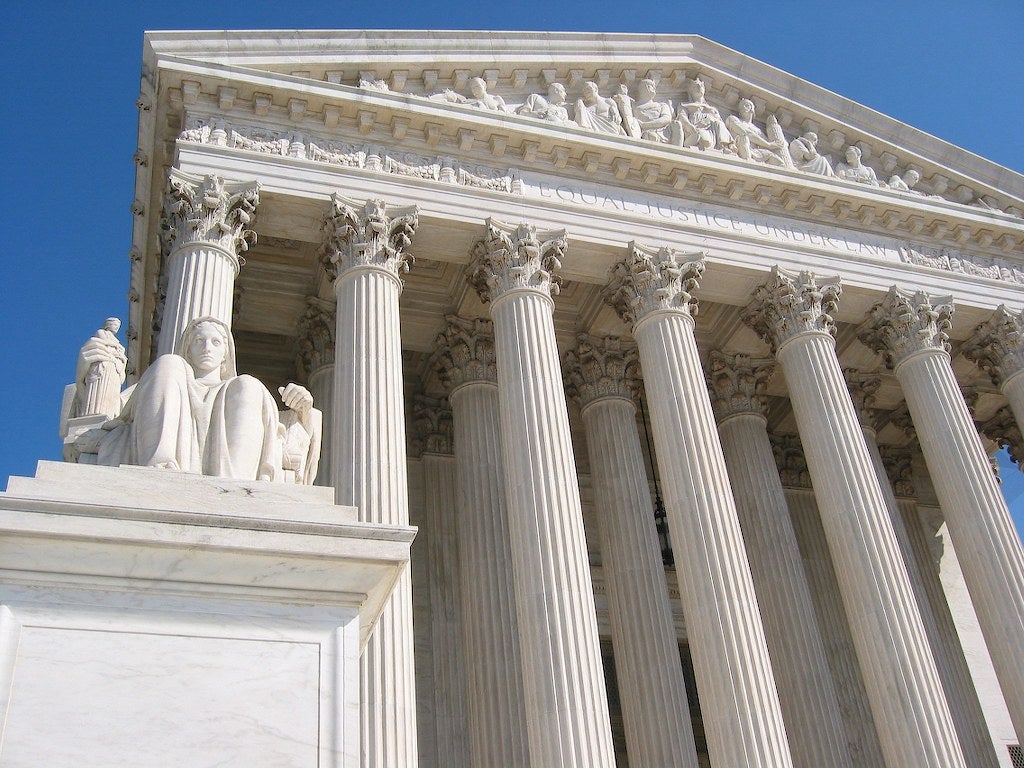Washington Post | Court packing isn’t the only way to reform the Supreme Court

Posted in News
KI Senior Resident Fellow, Leon Fink, discusses the historical precedent for Supreme Court reform in the Washington Post.
There is widespread hand-wringing about the state of the U.S. Supreme Court, but, so far, few substantial policies have been proposed to reform what longtime court reporter Linda Greenhouse has called a “weaponized Supreme Court [that] could reshape American life in profound ways.” Defiance of federal law in the Texas abortion case may only be the beginning of a deluge of forthcoming changes.
What steps might a Democratic-controlled Congress take to curb the influence of the court? Most journalistic commentary has centered on “court-packing” ideas harking back to President Franklin D. Roosevelt’s ultimately foiled attempt in 1937 to expand the court from nine to as many as 15 justices to prevent it from undoing his New Deal programs. This was (and remains) a messy solution — as is the call for limiting the terms of the justices. Proposals like this only draw public scrutiny away from an undemocratic, reactionary judicial branch and toward seemingly hyperpartisan executive authority. In fact, historical antecedents to Roosevelt’s court-packing plan may actually be more instructive.
The evidence is well laid-out by the legal and civil rights historian Stephen F. Lawson.Over a decade before FDR put forth his controversial idea, the court had drawn increasing public alarm for appearing to privilege property rights above all else. Beginning with Lochner v. New York (1905), the court struck down state regulations on working hours. Then it annulled limitations on union blacklisting in Kansas in 1915, overturned the federal child labor law in 1918 and ruled against a minimum wage for women workers in Washington, D.C., in 1923. Chief Justice and former president William Howard Taft, who served on the Court from 1921 to 1930, applauded these decisions and derided reform proposals as “socialist raids on property rights.”
As the court increasingly detached itself from public opinion on key issues of national welfare, liberal reformers pushed back. As early as 1912, Bull Moose presidential candidate Theodore Roosevelt accused the court of converting the Constitution into a document for the protection of corporate privilege. Led by the American Federation of Labor, the 1922 Cleveland Conference for Progressive Political Action similarly denounced the court for having “nullified righteous laws of state and nation for the protection of human rights, exalt[ing] judge-made laws above the statutes.” The liberal New Republic magazine condemned the bench for turning constitutional precedent into “mere mystic words of a dead scholasticism.”
Intellectually, critics were able to draw on the doctrine of legal realism, a perspective that insisted on examining the law as it operated in real life — including inevitably politically-influenced decisions of the judiciary — rather than as an abstract endowment of its own. Most famously associated with the jurisprudence of Justices Oliver Wendell Holmes Jr., Louis Brandeis and Felix Frankfurter, legal realism provided less a road map than a temperament suited to reformers determined to knock the courts down a peg in the constitutional balance of power.
By the early 1920s, a bruising political battle over court reform centered on two competing proposals. Wisconsin’s Progressive Sen. Robert “Fighting Bob” LaFollette introduced a constitutional amendment in 1922 that, though never put on the floor for a vote, would have given Congress the right to reenact any law ruled unconstitutional by the Supreme Court. Drawing on long-standing populist opposition to the court itself, the proposal immediately drew opposition not only from conservatives, who imagined opponents overturning due process, but also from some of the leading legal realists who preferred to put their faith in reformed law school education.
A more modest and initially more politically promising reform initiative emerged from libertarian Republican Sen. William Borah (Idaho). Particularly disturbed by close decisions such as the 5-4 child labor override in 1918 that, Borah thought, bred a “distrust in the solidity and worth of our Federal judicial system,” his plan required at minimum a 7-2 court majority before a state or federal statute was held unconstitutional — what we might call a supermajority judicial qualifier. Supporters of LaFollette’s proposed congressional oversight quickly warned that the Supreme Court would surely hold Borah’s act unconstitutional.
As Progressives quarreled among themselves, Reps. James Frear (R-Wis.) and Fiorello LaGuardia (R-N.Y.) pushed a compromise plan: A constitutional amendment that would empower Congress to set the number of justices required to declare statutes unconstitutional and also allow Congress to reverse such rulings by a two-thirds vote. But even before any of these proposed reforms made it before the hostile House Rules Committee, they all failed to win majority congressional backing.
Although none of these reform measures succeeded at the time — the exceptions being Nebraska and North Dakota, where supermajorities are required to this day to overturn state legislation — they clearly anticipated FDR’s disdain for court decisions that appeared to repeal the expressed will of the people. Moreover, although FDR’s decision to opt for court expansion over the extended process of amending the Constitution also did not play well politically, it effectively stopped the court for decades from countermanding legislative authority on economic matters.
Today’s Supreme Court, with a majority of Federalist Society-endorsed and Republican-appointed jurists endorsing what the late Justice Antonin Scalia championed as constitutional originalism, is very far from the legal realist spirit that dominated the court from the 1930s to the 1970s. Those frustrated with the Supreme Court today can learn from Progressive Party reformers a century ago and the debate over judicial review, including the supermajority idea espoused by Borah. Such a change would not only take the sting from the current right-wing majority, but ensure that the courts intervene far less often in the legislative process. If the court ruled such an act unconstitutional, then it would be time to take LaFollette’s congressional review plan out of mothballs.
